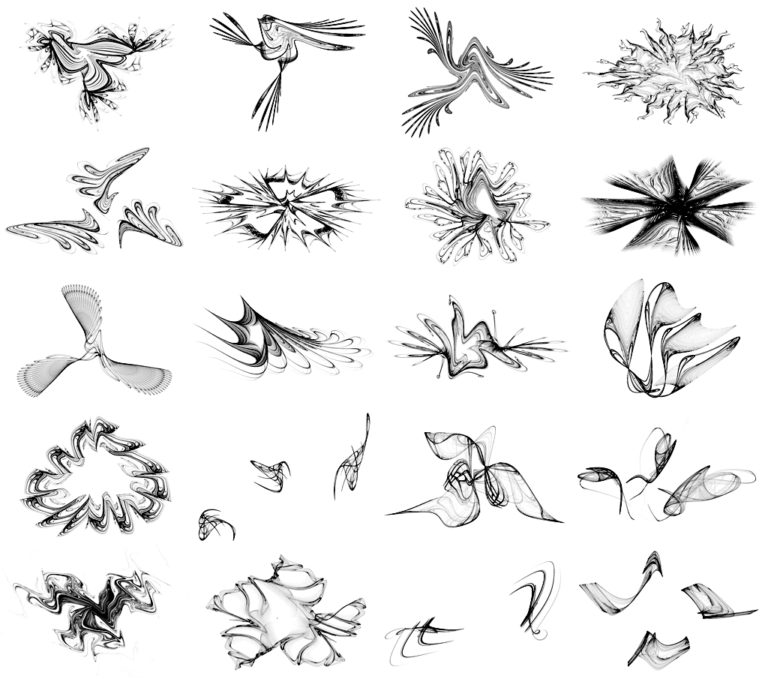I spent many hours during the first half of the 1990s writing „HOP – Fractals in Motion“, a very complex DOS based screensaver based on many new variations on the original Hopalong formula and the somewhat similar Gumowski-Mira formula that depicts nonlinear movements of subatomic particles.
I found that the pixel movements showed an interesting mix of regularity and variation, so I wondered what they would sound like when turned into music. I added a midi output function, basically translating pixel positions into piano and sampler notes. Some of the resulting music was sparse and austere, some of it was half-rhythmic and even funny, somewhere between Varèse, Zappa, and Nancarrow.
I spent a day or two with my friend Matthias Ebbinghaus, improvising with this strange setup. We recorded the improvisations. About 10 years later, we rediscovered the recordings and released some of them on a CD – on the ‚hyperfunction‘ label for algorithmic that I launched with Markus Reuter.
Review in WIRE magazine 04/09 by Julian Cowley:
„Michael Peters is primarily an electric guitarist with a long standing affinity for Frippertronics – last year he organised Cologne’s first livelooping festival. Now and then he’ll venture beyond the loop, as on this set of pieces for digital piano and sampler, recorded in 1996 but only recently edited and mixed for release. In a sense Peters here raises his enthusiasm for looping to a conceptual level: Impossible Music arises out of the zone of nonlinear dynamic systems, being based on a strange attractor discovered by physicists at the CERN nuclear research centre. By real-time manipulation of this fractal structure’s parameters, Peters and Matthias Ebbinghaus generate l6 algorithmically grounded improvisations. Algorithms – essentially, objectified sequences of instructions – can, as John Cage recognised, produce results that personal taste might have precluded, and figures as diverse as Xenakis and Eno have used such procedures effectively. Limited interventions, such as those Peters makes, add an improvisatory aspect that can conjure up further structural variation and surprise. But beyond the glacial satisfactions of the concept and a sense of the abstracted structure, the pleasure of such music necessarily depends on the quality of the sound material. Most of the samples Peters uses are percussion. There are classical guitar-like timbres on „Alhambra Algebra“, synthetic pipe organ sonorities on „Blow Up Meltdown“, marimba tones on „Woodenfall“. The digital piano often approximates a concert grand. It’s done well, but surely strange attractors cry out for wilder and less familiar sounds.“
Here is music based on the same algorithms played with more modern sounds:
In 2010, I was asked to write an article about my experiments with algorithmic music in Contemporary Music Review. The published CMR issue (Volume 29 Part 4, 2010) was called ‚Impossible Music‚ and contained several very diverse articles, all dealing with the topic of impossibility in music. One of my Gumowski-Mira attractors adorned its title.
(Thank you so much to Panayiotis Demopoulos for bringing this CMR issue to life, and for helping me write my article in an academic format.)


